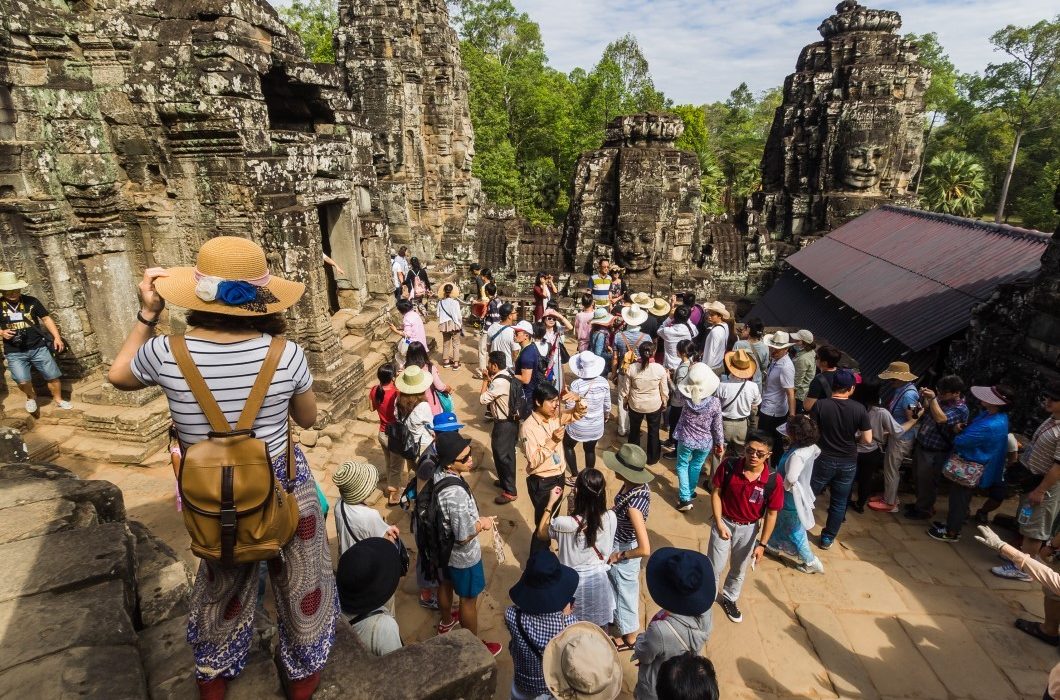
You might also like:
The temples of Angkor Wat in Cambodia are among the most beautiful and popular archaeological sites in the world. Five million tourists visit the place every year. Overcrowding however, has dramatic consequences: pollution, traffic jams, deterioration of the site.
The Angkor archaeological park extends over 400 km² of tropical forest. It conceals the precious remains of the various capitals of the Khmer Empire, which radiated from the 9th to the 15th centuries.
Angkor Wat (12th century), the largest and best preserved of Angkor’s monumental temples, is also the most visited. Mass tourism however is devastating to the archeological site registered as a world heritage by UNESCO in 1992.
In 2017 there were five million visitors, an exponential figure that could reach 10 million in 2025. Bayon and its stone carved faces sometimes resemble a crowded amusement park. Further on, Ta Prohm, a building famous for its giant trees that inspired Hollywood, is equally successful.
A success that can prove devastating, according to the guide of a group of tourists. “Millions of tourists walk on the roots of the trees which kills them,” he explains. The result was a collapse of entire walls that were supported by trees. “We are sad to see our culture threatened and damaged by mass tourism,” confides the helpless guide in the face of a contradictory situation.
Angkor is therefore a victim of its own success. In some places, restoration is underway and access to the temple is completely closed to the public. At the moment, there are about ten construction sites on the entire Angkor archeological site.
Moreover, in January 2015, three French tourists and two American sisters were expelled from Cambodia for taking nude pictures in one of the temples of the complex. They had been sentenced to six months suspended prison and banned from coming to Cambodia for four years. Last January, 10 British tourists were arrested in Siem Reap for engaging in “pornographic songs and dances”. Convicted of “pornography”, the organizer of this illegal “party” was sentenced to one year suspended prison.
Tired of this disrespectful behavior, the Cambodian authorities decided to act. Within a few months, rules should be put in place to limit the number of visitors; perhaps daily quotas or slots for each temple. The Cambodian authority managing the site has not yet taken a decision. “A compromise must be found to preserve the temples and preserve authentic visits for visitors,” says the Deputy Director General of the Tourism Bureau.
Originally, only priests and not millions of visitors could come to the top of the temples. In the future, history lovers will have to follow new rules to have a chance to visit the world’s largest archaeological site.
Source: tourism-review.com
